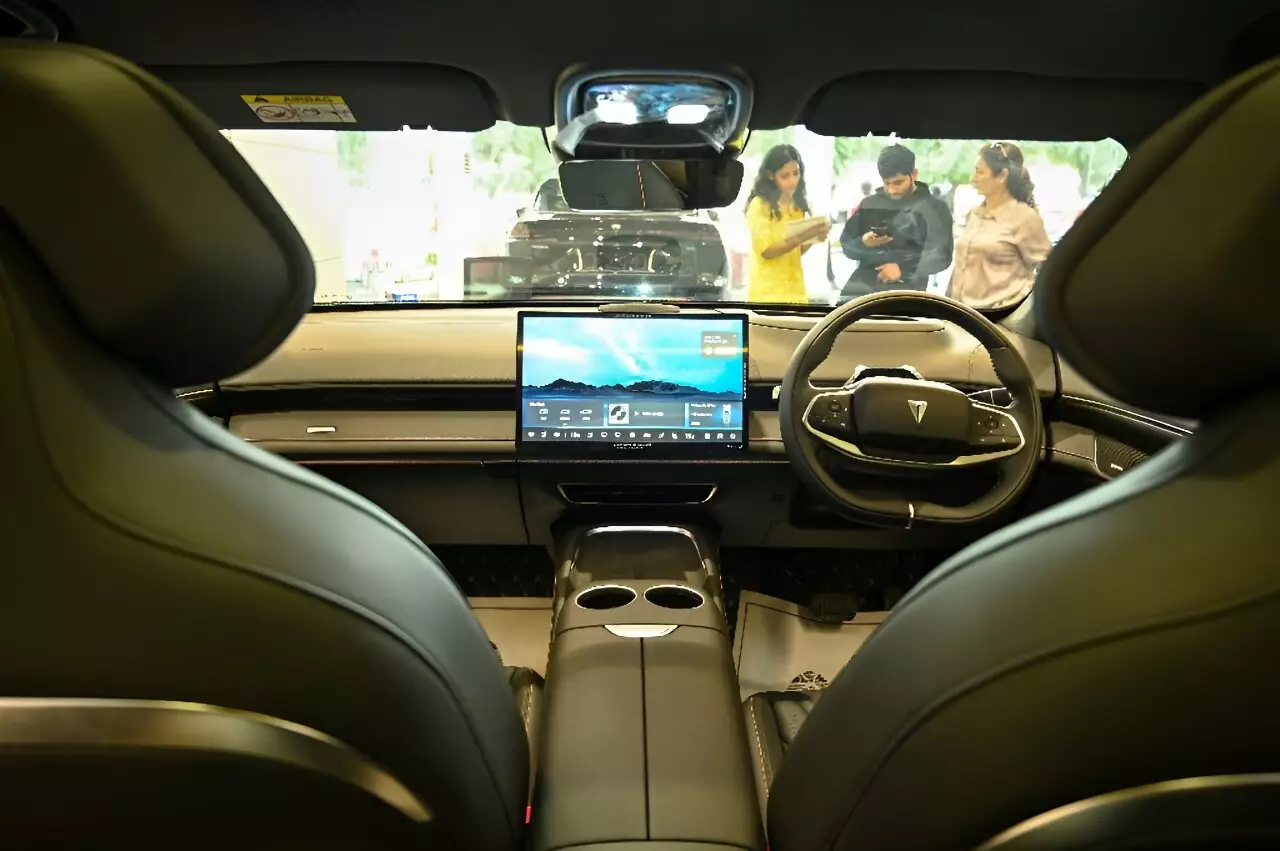In recent years, the landscape of transportation in Nepal has transformed significantly, with the rise of electric vehicles (EVs) marking a pivotal point in the nation’s journey towards modernity. Surendra Parajuli, a taxi driver in Kathmandu, exemplifies this shift. His ownership of a BYD Atto 3, a battery-powered vehicle, reflects not only his personal economic gain but also a broader change in societal attitudes toward energy and transportation. Just a decade ago, the idea of a taxi driver opting for an electric car would have seemed far-fetched, as chronic power outages plagued the nation. Today, however, a newfound abundance of inexpensive hydroelectric power has made EVs a practical choice.
Parajuli proudly reports substantial financial savings. With an impressive driving range of 300 kilometers on a single charge and a markedly lower operating cost compared to fossil fuels, electric vehicles are not only economically advantageous but also environmentally friendly. This multitude of benefits positions electric taxis as an essential aspect of a transportation revolution that stands to alleviate pollution woes in urban centers like Kathmandu, which are infamous for congestion and deteriorating air quality.
Despite being a small fraction of the 6.2 million vehicles on the road, the number of electric vehicles in Nepal is growing rapidly. Official estimates suggest that over 40,000 electric cars now traverse the robust terrain of the mountainous nation. This surge in demand is underscored by the fact that more than 25% of these vehicles were imported within just a year, almost tripling from previous figures. The overwhelming majority of these vehicles—nearly 70%—are sourced from China, which has solidified its status as a dominant player in the global electric vehicle market.
This trend is not purely coincidental; it is backed by a shift in public sentiment as well. As Yajya Raj Bhatt, a prospective electric vehicle buyer, notes, the previous dependency on petrol has transformed into a desire for energy independence, which electric mobility facilitates. The trend can be observed marked not only by the increasing number of vehicles but by a growing recognition of the potential benefits that EVs bring.
Energy Revolution: From Scarcity to Abundance
The backdrop to this electric vehicle boom is the remarkable transformation of Nepal’s energy landscape. Nearly 80% of Nepalese had no access to electricity at the turn of the century, but aggressive investment in hydroelectric power has changed that narrative. Currently, about 95% of the population has electricity, driven by an enormous fourfold increase in hydropower output over the last eight years. This shift has paved the way not only for expanded access to electricity but also for reduced costs, making electric vehicles a viable and attractive option for the average consumer.
Kulman Ghising, representing the Nepal Electricity Authority, illustrates how these developments have created favorable conditions for widespread EV adoption. By curbing fossil fuel imports, the country has saved an estimated $224 million—a significant sum for a nation that historically relied on remittances. With an ambitious goal of increasing installed power capacity from 3,200 megawatts to 30,000 megawatts in the next decade, the potential for renewable energy to drive both economic growth and environmental sustainability is profound.
Environmental Concerns Amid Enthusiasm
However, the electric vehicle boom is not without its complexities. While the government touts the positive implications for sustainability, challenges loom on the horizon. Critics assert that rapid hydroelectric expansion might come at a significant ecological cost, particularly as new dams could jeopardize sensitive habitats. Recent policy changes that allow dam construction in previously protected areas raise concerns among environmental activists.
Additionally, the handling of electronic waste, particularly from lithium-ion batteries, has not been adequately addressed. As the popularity of electric vehicles grows, so too will the demand for sustainable waste management solutions. Nabin Bikash Maharjan of Blue Waste to Value emphasizes the urgency for the government to take a more holistic and long-term approach toward potential environmental fallout, rather than merely focusing on immediate transportation needs.
While the momentum of electric vehicles in Nepal represents a significant stride toward a greener future, the journey ahead requires careful navigation of economic ambitions and environmental stewardship. The government’s bold aims for a sustainable transportation future juxtapose with the need for deep, systemic solutions to address the coming challenges. Therefore, as Nepal rides the wave of an electric vehicle revolution, the careful balancing of growth, environmental preservation, and waste management will determine the success of this transformative era in its history. The potential for Nepal to emerge as a leader in renewable energy and sustainable transportation is substantial—if managed wisely.


Leave a Reply